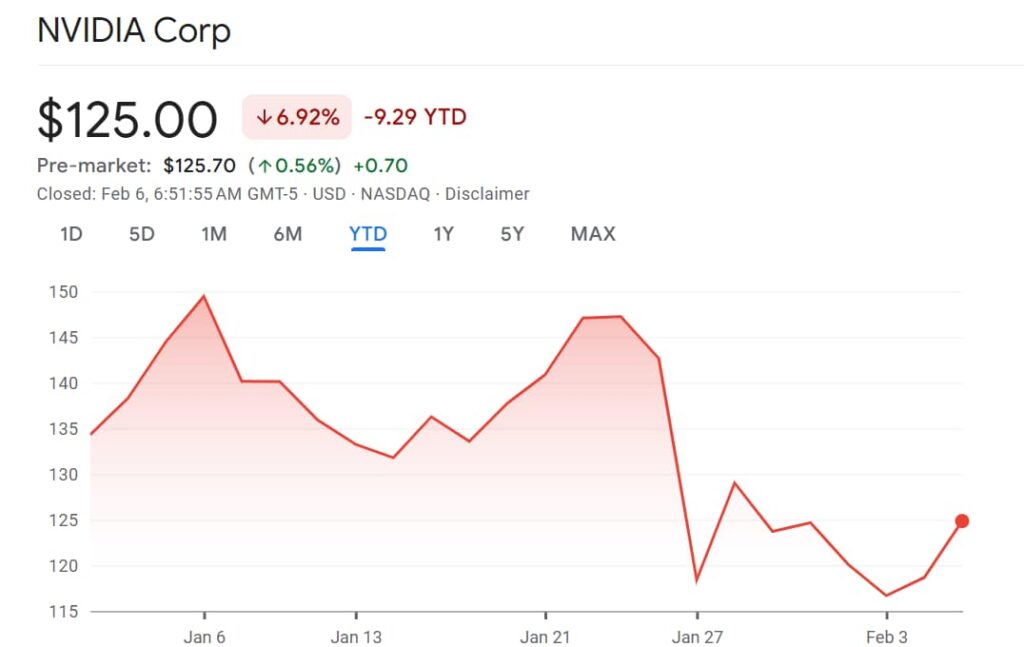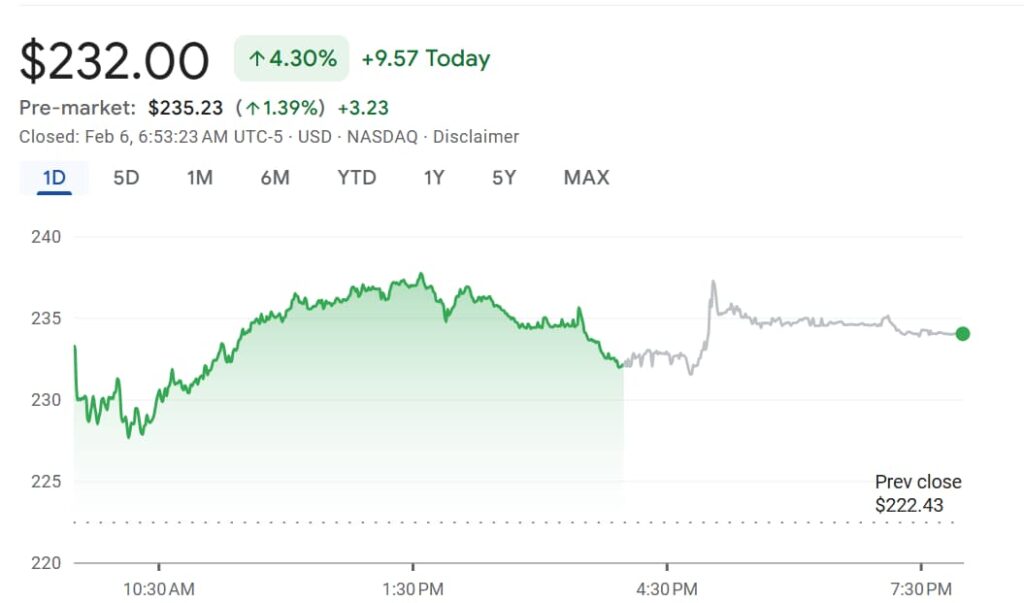The semiconductor industry staged a strong comeback in 2024, fueled by growing demand across multiple sectors and the accelerating adoption of artificial intelligence.
However, the sector saw volatility in early 2025 after DeepSeek’s low-cost AI model raised concerns that AI development could shift away from high-performance chips, challenging the dominance of Silicon Valley players.
The sell-off was short-lived as experts dismissed fears of a fundamental shift in AI hardware demand.
With global semiconductor sales projected to reach $705 billion in 2025, according to Gartner, and infrastructure investment continues to rise, Finbold has identified two semiconductor stocks set for strong performance in 2025 and beyond.
Nvidia (NASDAQ: NVDA) stock
Nvidia (NASDAQ: NVDA) stands out as a compelling investment for 2025, backed by its market dominance in the AI semiconductor space.
The company commands over 90% of the data-center GPU market and more than 80% of AI processors, as reported by DataCenterDynamics, with its CUDA platform further strengthening its foothold by enabling seamless GPU programming.

After soaring 170% in 2024, Nvidia’s stock pulled back nearly 7% in 2025, closing at $125 on February 5, as concerns over competition from China’s DeepSeek AI and trade tensions weighed on investor sentiment.
Despite this short-term decline, rising AI infrastructure spending from Nvidia’s largest clients ensures sustained demand for its high-performance computing solutions.
For instance, Alphabet (NASDAQ: GOOGL) announced that it will allocate $75 billion in capital expenditures for 2025, a sharp increase from $52 billion last year, while Microsoft (NASDAQ: MSFT) and Meta Platforms (NASDAQ: META) plan to invest $80 billion and up to $65 billion, respectively.
Beyond big tech, Nvidia is also a technology partner for the $500 billion Stargate AI infrastructure project, a joint venture involving OpenAI, Oracle (NYSE: ORCL), and SoftBank (TYO: 9984) aimed at building AI infrastructure at scale.
The tariffs on China are unlikely to significantly impact Nvidia’s stock in the near term, as strong demand from key clients and high-margin products help offset potential challenges.
While supply chain costs may rise, China’s retaliatory tariffs focus on commodities like oil and coal, leaving Nvidia’s core business unaffected for now, though export controls on certain minerals used in chip production have been introduced.
Broadcom (NASDAQ: AVGO) stock
Another chipmaker that could benefit from rising AI infrastructure spending is Broadcom (NASDAQ: AVGO), which plays a key role in custom AI accelerators and networking solutions.
The company has already capitalized on AI-driven growth, generating $12.2 billion in AI hardware revenue in fiscal 2024, marking a 220% year-over-year increase.
AI-related sales now account for 24% of Broadcom’s total revenue, with the company projecting AI chip revenue between $60 billion and $90 billion by 2027.

As of the market close on February 5, Broadcom’s stock was trading at $232, up 4% on the day and 89% over the past year.
The stock had previously slumped 17% following the announcement of DeepSeek’s R1 AI model, as concerns mounted that AI development could become less hardware-intensive, potentially impacting demand for high-performance chips.
However, renewed confidence in AI infrastructure spending, driven by big tech’s aggressive investment plans, helped reverse sentiment.
Broadcom shares, for instance, rebounded 4% in a single day after Alphabet’s earnings report, with investors growing bullish on the company’s ability to capitalize on its advanced ASICs and expand its market share.
That being said, despite recent volatility sparked by DeepSeek’s AI model, the long-term outlook for semiconductor stocks remains strong as demand for high-performance computing continues to rise.
Both Nvidia and Broadcom are well-positioned to capitalize on this momentum, making them compelling buys for 2025 and beyond.
Featured image via Shutterstock







